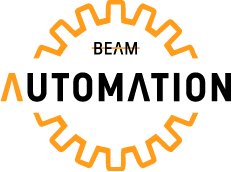A Customer Relationship Management (CRM) system is designed to bridge the gap between businesses and their customers. However, even after implementations that span several years, expensive platforms, and rigorous training programs, the failure of CRM strategies is simply astounding.

CRM Strategy Failures and Fixes with AI Tools
A report by CIO magazine asserts that failure to produce ROI is realized in up to 30 percent of the CRM projects. The cause? It isn’t just the tool. In many cases, it is the strategy, or the absence of one.
In this blog, we dissect the top CRM implementation mistakes, explore the role of AI in CRM, and offer automation tips that can reinvigorate even the most underperforming systems.
Why Most CRM Strategies Fail
1. Poor User Adoption
One of the top reasons for CRM failures is a lack of buy-in from the people who use it every day. Interface might be considered clunky, time-consuming or useless to the sales teams. As there is decreased usage, there is low data quality.
Pro tip: Select CRM applications that can be easily added to your core activity and have extensive mobile and web access.
2. Lack of Clear Objectives
Most companies adopt CRM without setting any measurable endgame such as demanding lead response time, raising customer lifetime value, or decreasing churn.
The strategy used in CRM should not be based on IT but rather on business objectives.
3. Inadequate Data Management
The performance of a CRM system will depend on the quality of data that will be contained within it. Reapplication of duplicates, obsolete contacts, and format inconsistency result in bad targeting and unproductive resources.
CRM automation tips like auto-tagging, lead scoring, and real-time deduplication can significantly clean and enhance data over time.
4. Disconnected Marketing & Sales Workflows
In many cases, CRMs are applied in the process of sales only, without addressing touchpoints of the customer journey, such as marketing and after-sales customer communication. This generates disjointed data, making it difficult to create correct customer profiles.
Turning CRM Failures into Wins: The Role of AI and Automation
In case you have encountered any of the above problems, then there is still time- at least. The use of workflow automation and AI in CRM can revive a lifeless approach to making a high-performing ecosystem.
1. AI-Driven Lead Scoring & Behaviour Prediction
The latest CRM systems based on AI rank the leads and analyse the interaction patterns with customers. There are tools that are used to calculate the probability of conversion based on the opened email, visits to the website, and behaviour.
This leads to targeted selling, improved resource utilization as well as increased conversion.
2. Automated Customer Segmentation
AI enables personalization of the audience in real-time according to the following criteria: user behaviour, geography, funnel stage, or industry. This causes individualised interaction but not without burdening manual work.
3. Intelligent Chatbots & Email Sequences
AI chatbots can cultivate leads in off-hours, can address frequently asked questions and can even book the demos. Interaction-driven automated email workflows can increase the campaign open rates by up to 40%, according to Mailchimp studies.
4. Predictive Analytics for Retention
AI is used to find customers who are about to churn due to a sentiment such as increased prospect engagement or lowered engagement over time. This provides the teams with an opportunity to respond before the customer leaves.
How to Build a CRM Strategy That Works
1. Align CRM Strategy with Business Objectives
Instead of focusing on CRM as a “software” solution, define its role in your larger customer experience goals:
Improve response times
Track every customer touchpoint
Increase revenue from existing customers
Break these objectives down into KPIs. Then, configure your CRM to track these KPIs consistently.
2. Map the Full Customer Journey
Use journey mapping to visualise where your CRM should be adding value:
Discovery stage (ad clicks, website visits)
Conversion stage (forms, consultations, purchases)
Retention stage (for example, emails, support, loyalty programs)
Each touchpoint should feed data into your CRM for a 360° customer view.
3. Enable Cross-Team Collaboration
Make sure that your CRM is capable of communicating with marketing, sales, and support teams. Full-lifecycle engagement is made through collaborative processes provided by CRM Platforms.
4. Automate Repetitive Workflows
Whether it is handing out the lead distribution or following up via email or establishing the nurturing process, automation increases consistency and spares precious time.
McKinsey research shows that companies that automate 30 percent of their business processes in CRM report a 20-25 percent growth in team productivity.
5. Invest in Training & Governance
CRM does not work like a plug-and-play. Coach your staff on data hygiene, usage of CRM, and the strategic usefulness of automation. Appoint a CRM champion/administrator who can address the health of the system.
Example:
Problem: A SaaS company had experienced poor CRM outcomes in regards to the high lead loss and uneven follow-ups.
Core reasons: Non-segmented campaigns, manual lead assignment and the lack of web-CRM integration.
Solution:
Interconnected Web forms with CRM
Made lead scoring based on AI to prioritise the outreach
Installed an automated series of onboarding
Outcome: 27% growth of qualified leads and 2 times as much customer lifetime value within 6 months.
Result: Pipeline-quality leads increase by 27 percent and customer lifetime value doubles in six months.
FAQs
What are the common reasons CRM strategies fail?
The usual reason is a low level of user adoption, confusion of purpose, poor data hygiene, and the absence of cross-functional work. CRM implementation mistakes often stem from treating it as just a sales tool rather than a full customer journey solution.
How can AI improve a failing CRM system?
The CRMs that are being enhanced by AI are being scored, identifying behaviour with the help of AI, segmenting contacts, and automating engagement. This enables teams to work smart and not hard and focus the right users at the right time.
What steps should I take to align CRM with business goals?
The first step is to establish concrete results in business. Then align CRM processes to facilitate those results, such as growing customer retention, reducing sales cycle length, or increasing deal size. Organise tools, teams and data accordingly.
Can automation help fix low engagement in CRM campaigns?
Yes. Automation creates timeliness and individualised communication. Measuring this interaction is done through a divide and conquer process, which allows communication to be brought to more relevance and thus open and click through rates rise, contributing to the increase of engagement and conversions.
Final Thoughts
Most organisations get trapped in complicating their tools and fail to make use of what they are capable of.
However, using artificial intelligence, smart automation, and a business-focused approach, your CRM can become the growth tool you intended it to be.
Does your CRM strategy need help being transformed? Let BEAM Automation help you with AI and CRM automation solutions to create functional engagement systems.

